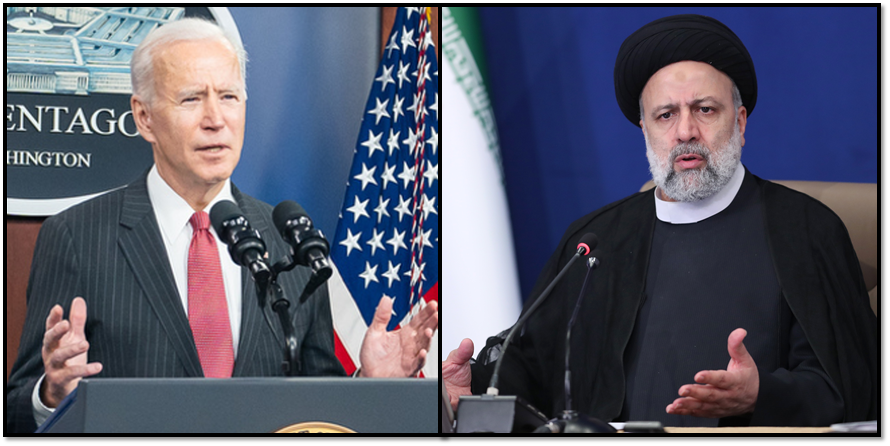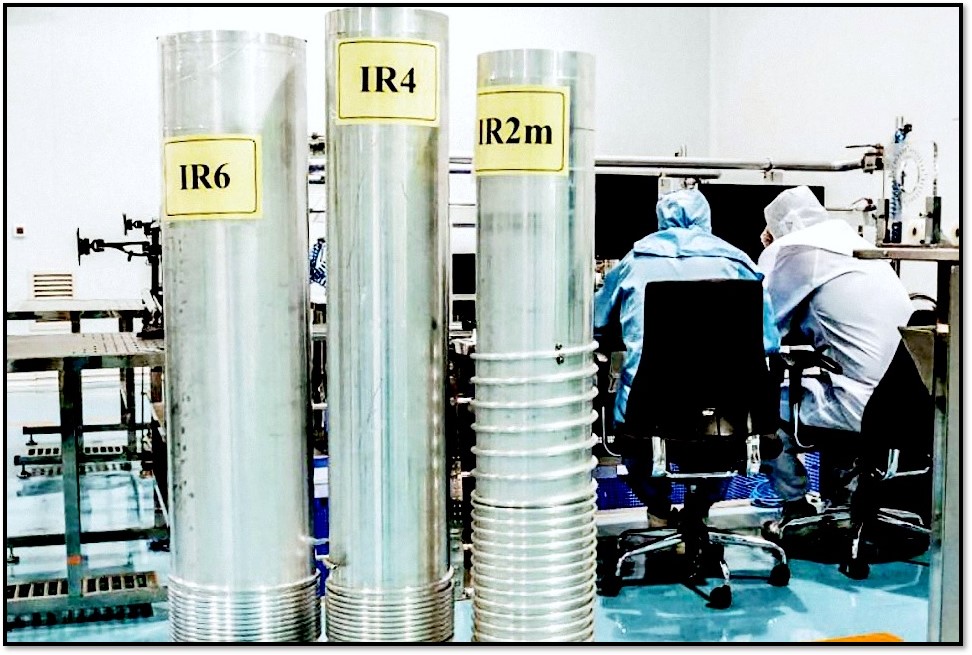Robert S. Litwak is Senior Vice President and Director of International Studies at the Woodrow Wilson Center.
Diplomacy between Iran and the world’s major powers—Britain, China, France, Germany, Russia and the United States—over bringing Iran back into compliance with the 2015 nuclear agreement (the Joint Comprehensive Plan of Action or JCPOA) has stalled. A senior State Department official has said that the United States is considering “other tools … to increase the pressure on Iran,” which is a nuclear “threshold” state, to break the impasse. Negotiations are playing out against the backdrop of the latest report from the International Atomic Energy Agency that Iran has accelerated its nuclear program and breached the 2015 agreement’s constraints on uranium enrichment. Based on the IAEA’s findings on Iran’s stock of fissile material, independent nuclear experts calculate that Iran could acquire sufficient weapons-grade material to produce a single nuclear bomb in as little as three weeks.
"The tension between these competing objectives—behavior change versus regime change—continues to roil the U.S. policy debate."
The current round of diplomacy began after the Biden administration reversed President Trump’s 2018 decision to withdraw from the JCPOA. In America, Iran’s nuclear challenge has been uniquely contentious because it is a proxy for a more fundamental debate about this “rogue state”—whether the threat derives from Iranian behavior or the character of its regime. The tension between these competing objectives—behavior change versus regime change—continues to roil the U.S. policy debate.

The JCPOA was quintessentially transactional—a deal focused exclusively on constraining Iran’s nuclear aspirations by blocking its access to weapons-usable fissile material. It was a discrete agreement, not a grand bargain encompassing other objectionable aspects of Iranian behavior, such as the Tehran regime’s destabilizing regional policies and human rights abuses. The Trump administration rejected the JCPOA precisely because it was transactional, not transformational.
The administration’s “maximum pressure” campaign to deny the Tehran regime any oil revenues, coupled with its appeals to the Iranian people to voice their objections to the regime’s “malign activities,” pointed to regime change as its tacit objective. The premise of maximum pressure was that the strategy would either coerce the Tehran regime into accepting its comprehensive set of demands or force the collapse of the regime. More a vain hope than a realistic prospect, the Trump administration’s strategy had unintended consequences. The withdrawal from the JCPOA diplomatically isolated the United States, not Iran. Moreover, the Tehran regime met “maximum pressure” with its own pressure by breaching the JCPOA’s limits on uranium enrichment and employing an asymmetrical strategy to attack Saudi oil installations and threaten shipping in the Persian Gulf.
Threshold state, hedge, and breakout are all terms from the nonproliferation policy lexicon that have been applied to the Iranian case. Unpacking these concepts, which relate to nuclear capabilities and intentions, is essential for assessing U.S. policy options moving forward, including for the very real prospect of “a world in which there is no return” to the Iran nuclear deal.
"While many nuclear-capable countries have demonstrated restraint, Iran’s intentions have been exposed through its covert uranium enrichment and weapons-related activities dating back decades."
Threshold state status derives from capabilities—the ability to fabricate fissile material (as permitted signatories of the Nuclear Nonproliferation Treaty) in tandem with an industrial base that could support weapons acquisition. What distinguishes Iran from other threshold states, such as Brazil and Japan, with similar capabilities is intent. While many nuclear-capable countries have demonstrated restraint, such as through compliance with IAEA safeguards on declared civil nuclear facilities, Iran’s intentions have been exposed through its covert uranium enrichment and weapons-related activities dating back decades.

The dilemma of the Iranian nuclear challenge arises from its mastery of uranium enrichment: centrifuges that spin to produce low-enriched uranium for nuclear power can keep spinning to yield highly enriched uranium for bombs. Since nuclear diplomacy with Iran though the JCPOA has focused on restraining, not eliminating, Iran’s uranium enrichment program, the regime retains the option—a hedge—for a nuclear weapon. A U.S. prerequisite for any comprehensive nuclear agreement was that this breakout period for converting a latent capability into a weapon should be long enough (12 months) for the United States to have sufficient strategic warning to mobilize an international response. In short, the goal of nuclear diplomacy has been to keep Iran’s latent capability latent.
With its origins dating to the Shah’s era, Iran’s nuclear program has been determined and incremental, but is not a crash program to acquire a weapon in the face of an existential threat. To the extent Iran once faced such threats, it was during the attritional war with Saddam’s Iraq and later, after 9/11, when faced with large-scale U.S. forces to the East and West in Afghanistan and Iraq. Now, with Saddam toppled and U.S. military disengagement from the region, a nuclear hedge is Iran’s strategic sweet spot—maintaining the potential for a nuclear option, while avoiding the regional and international repercussions of actual weaponization. Iran’s acceptance of the 2015 nuclear agreement—constraining its uranium enrichment program in return for sanctions relief—was consistent with a hedge strategy. The strategic ambiguity of a hedge well served Iranian interests.
But after the U.S. withdrawal from the JCPOA and Iran’s responding move to enrich near-weapons-grade uranium, has the Tehran regime’s strategic calculus changed? Iran witnessed Pakistan and North Korea cross the weapons threshold and the world accommodate that new reality. However, both Pakistan and North Korea face security dilemmas for which their ruling regimes believe nuclear weapons are the answer. Iran does not currently face an existential threat that creates an imperative to shed the hedge strategy and move toward weaponization. Indeed, the occasion for Iran enriching to a near weapons-grade level was not a hostile change in the external environment, but rather, the withdrawal of the United States from the JCPOA. Accordingly, a plausible explanation for this Iranian move was to gain bargaining leverage with the United States in negotiations over the revival of the JCPOA.
Having shortened the breakout time to weaponization. Iran’s hedge is now less hedged. This is the urgent dilemma confronting the Biden administration: On one hand, the longstanding goal of U.S. policy has been to prevent Iran from obtaining a nuclear weapon. On the other, by drawing this red line—preventing weaponization—successive U.S. administrations essentially signaled that the United States would not undertake preventive military action to deny Iran any nuclear hedge option.
Although nuclear diplomacy has stalled, the structure of a revived deal is evident: Iran’s return to the JCPOA’s constraints on uranium enrichment in return for the lifting of U.S. financial and oil sanctions, as well as an extension of the 2015 agreement’s “sunset” provisions. The analytical case for such a revived JCPOA is compelling—for Iran, it would provide sanctions relief and allow the regime to retain its nuclear hedge; for the United States, it would reverse Iran’s breaching of the JCPOA’s constraints on uranium enrichment, thereby restoring the extended breakout time to weaponization.
"If diplomacy fails and Iran remains in non-compliance with the JCPOA, the United States has limited policy options."
But it is an open question whether political space exists in Iran to seal a revived deal with the “Great Satan” after the Trump administration’s reneging on the JCPOA and the election of ultraconservative President Ebrahim Raisi. The same concern holds on the American side, where the transactional JCPOA was never popular precisely because it was not transformational.
If diplomacy fails and Iran remains in non-compliance with the JCPOA, the United States has limited policy options. The US would face a major challenge maintaining the existing structure of punitive sanctions as states would be tempted to cultivate commercial relations with Iran. China is already flouting the US threat of secondary sanctions through its importation of Iranian oil, which has been a lifeline for Tehran regime.
If diplomacy fails to constrain Iranian capabilities, the United States and Israel would likely redouble their cyberattacks (e.g., Stuxnet) and covert intelligence operations to disrupt Iran’s nuclear program. But such efforts can only go so far. Invariably, the collapse of the JCPOA would revive discussion of the military option—the possibility of American airstrikes on Iran’s nuclear infrastructure.
This openly-debated option—what would be the most telegraphed punch in history—runs up against four major liabilities: first, military action would only set back the program for several years, not end it (e.g., then Defense Secretary Leon Panetta publicly estimated three years in 2011) ; second, more fundamentally, in Tehran, military action would be viewed as the initiation of a regime-toppling war that the Iranian leadership has vowed would escalate geographically (or, at least, no U.S. President could discount that possibility); third, an American attack could well generate a nationalist backlash within Iran with the perverse consequence of bolstering the clerical regime; and fourth, notwithstanding claims about the ability of U.S. bunker-busters to surgically collapse hardened targets, military strikes on “hot” sites containing toxic fissile material (e.g., uranium hexafluoride, enriched uranium, etc.) could have disastrous environmental consequences.
A former chief of the IAEA once observed, “You cannot bomb knowledge.” Iran’s demonstrated capability to enrich uranium provides Tehran with an inherent hedge to produce a weapon. So long as the clerical regime retains power, that threat can be mitigated but not eliminated. The gap between Iran’s pursuit of a hedge and the US red line pegged to the technological achievement of weaponization created space for diplomacy. But should diplomacy fail, short of Iran’s overt weaponization—a test—the United States would be hard pressed to get international support for military action to counter the threat of a shortened breakout time.
Given the diplomatic and military constraints, U.S. policymakers could be left with a third option—America’s default strategy toward adversarial states: containment and deterrence. With Iran, an updated version of George F. Kennan’s strategy would decouple the nuclear issue from the question of regime change and rely on containment and deterrence to check Iran’s nuclear capabilities and regional actions. Iran’s status as a nuclear threshold states presents an ongoing dilemma, and as a former senior U.S. official once quipped: problems have solutions; dilemmas have horns.
The views expressed are those of the author and do not reflect an official position of the Wilson Center.
This article was first published by the Wilson Center.
Photo Credits: Raisi via President.ir; Centrifuges via Mashregh News
